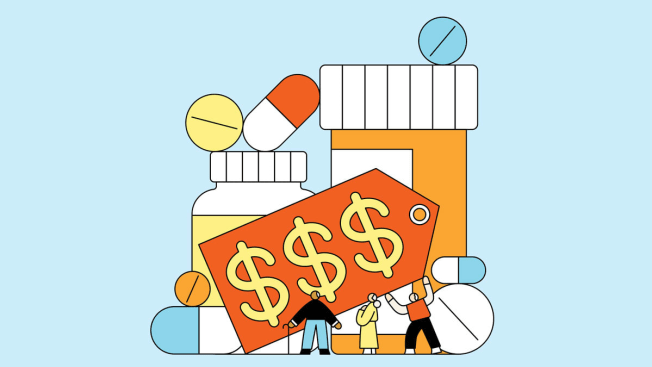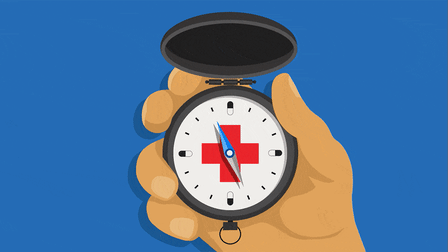How Seniors Can Save Money on Prescription Meds
Choose the right insurance coverage, know when to pay with cash, and other helpful steps

Do you experience sticker shock when you’re at a pharmacy to fill prescriptions? Many older adults say they have. In fact, 11 percent of Americans ages 65 and older—6 million people—report that they or a loved one have skipped prescribed meds to save money, according to a 2021 Gallup survey.
“High drug costs affect everyone, but they have a disproportionate impact on seniors, both because they have a greater need for them and because Medicare doesn’t cover all their drug expenses,” says Timothy Lash, president of West Health, a nonprofit focused on aging and healthcare. “When you look at the rising prices of prescription drugs, and couple that with inflation, it’s like throwing gas on a fire.” Here’s what you can do now.
Evaluate Your Medication Needs
More than half of adults ages 65 and older say they take at least four prescription drugs, according to the Kaiser Family Foundation. But some may not be necessary, says Dana Simpler, MD, an internist at Mercy Medical Center in Baltimore. “Sometimes, patients are put on a prescription medication that’s only meant to be used for a short time ... and it just keeps going to automatic refill,” she says.
Go Over Your Coverage
Carefully review your medication coverage during open enrollment, Donovan says. (For Medicare Part D, the prescription drug benefit, open enrollment ends Dec. 7.) You may want to check that a plan has:
- Your current regular medications in its formulary.
- Your current pharmacy in its network. This may mean you’ll have lower copayments or coinsurance.
- Additional medication coverage in the coverage gap. Such plans may charge a higher premium. But if you have high prescription costs, it may be worthwhile.
Consider Paying Cash
Not using insurance for prescriptions seems counterintuitive, but in some cases “it may ultimately help you save money in the long run,” Donovan says. GoodRx, for instance, provides coupons that can save you up to 80 percent off the list price of generic and some brand-name drugs at certain pharmacies. It’s free, but the GoodRx Gold program ($9.99 a month for an individual and $19.99 a month for a family) is more extensive, offering access to more than 1,000 drugs for less than $10 per prescription out of pocket.
Many chain pharmacies and big-box stores such as Costco and Walmart have their own prescription savings programs. When you join Walgreens Prescription Savings Club, for example, hundreds of generic drugs are available at prices that may be lower than your insurance copayment.
Look Into Online Pharmacies
You may save on regularly used medications by having them sent to you from a mail-order pharmacy. Check with your health insurer or regular pharmacy to see whether that will net you a better deal.
There are also newer online pharmacies, like the Mark Cuban Cost Plus Drug Company, which sells more than 700 generic prescription drugs at lower-than-retail prices. Websites with similar offerings include Amazon (search for “pharmacy”), GeniusRx, and Honeybeehealth.
With these, you may spend less in some cases than you might with insurance. For example, Cost Plus offers the cancer drug imatinib (Gleevec) for $39 for a 30-day supply compared with the $9,657.30 list price. (Your insurer might cover some or all of that, but you may first have to burn through a big deductible.)
When it comes to online pharmacies, however, it can be the Wild West, says Gabriel Levitt, president and co-founder of PharmacyChecker, which helps people find the lowest prices on prescription meds. Some may not carry less common meds, and it can take a few days to get what you need, he says. The Food and Drug Administration urges you to make sure an online pharmacy:
- Requires a valid prescription from a licensed healthcare professional.
- Is licensed by your state board of pharmacy (go to fda.gov and search “locate a state-licensed online pharmacy”).
- Has a U.S. state-licensed pharmacist available if needed.
- Carries the National Association of Boards of Pharmacy Verified Internet Pharmacy Practice Sites (VIPPS) seal.
Get More Help If You Need It
Some drug companies offer patient assistance programs based on income and health needs, says Chad Worz, PharmD, CEO of the American Society of Consultant Pharmacists. You can apply directly to the manufacturer (check its website) for a discount card or free or discounted medications. Other resources include:
- Medicare Extra Help Program. This provides information about the Social Security assistance program and the application process for the Medicare Part D subsidy.
- State Pharmaceutical Assistance Program. To find out what’s available locally, go to medicare.gov and search “SPAP.”
- Medicine Assistance Tool. This connects people with patient assistance programs.
Should You Buy Drugs From Canada?
Canada is known for low prices on prescription drugs. Many brand-name drugs are 28 to 46 percent cheaper there. “Americans have been buying drugs from Canada for as long as there have been drug price discrepancies,” Levitt says. Although the practice is technically illegal in most circumstances, the FDA generally doesn’t stop people from obtaining medications from Canada. If you opt to do this, be sure of the following:
- The pharmacy website has a Canadian street address, it’s licensed in Canada (go to napra.org and search “online pharmacies”), and it has a Canada-licensed pharmacist available to answer questions. Some online pharmacies claim they’re in Canada but are actually elsewhere.
- The pharmacy is part of the Pharmacy Verified Websites Program (check at safe.pharmacy), which helps consumers find safe pharmacies.
New Ways to Cut Costs
The recently passed Inflation Reduction Act contains several cost-cutting measures. “It’s a big deal for older adults, as it should significantly lower the out-of-pocket drug expenditures of the average Medicare recipient,” Worz says.
What to expect and when:
- The out-of-pocket cost of insulin will be limited to $35 per month for those with Medicare Part D, and adult vaccines covered under Medicare Part D will be free. It begins in January 2023.
- Out-of-pocket spending on meds for those with Medicare prescription coverage will be capped. In 2025, the cap will be $2,000 per person per year.
- Medicare will be allowed to negotiate prices with drug companies for the first time. Initial negotiations will start in 2023, and prices for 10 meds will be negotiable in 2026. Prices for more meds will be negotiable in subsequent years.
Editor’s Note: This article also appeared in the December 2022 issue of Consumer Reports On Health.




















